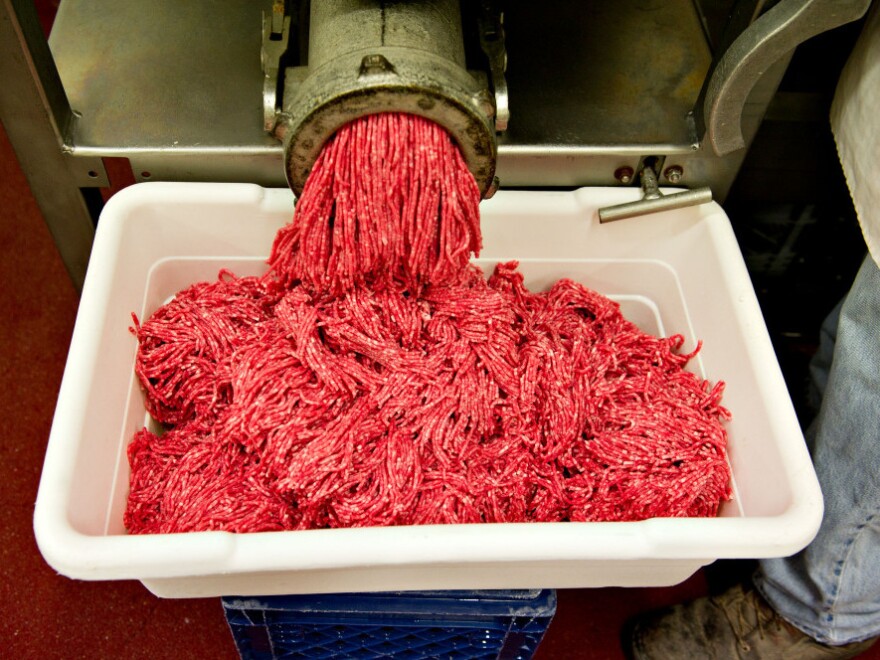"Pink slime" has been oozing back into headlines in recent weeks after McDonalds, followed by other fast food chains, announced it had stopped using beef trimmings to fill out its hamburgers.
A product the industry calls "lean, finely textured meat" has been a fixture in the ground beef served in the free school lunch program and fast food hamburgers for years. But after Chef Jamie Oliver demonstrated how "pink slime" is made on his TV show last year, and media reports suggested it may not be as safe as the government claims, alarm among consumers began surging.
Now, thousands people are adding their name to petitions asking the government stop buying this stuff.
But what exactly is it? NPR's Melissa Block spoke to Michael Moss, an investigative reporter for the New York Times whose stories in 2009 on the safety of ground beef earned him a Pulitzer Prize, to get some answers.
"[Trimmings are] taken from the outermost part, and they happen to be the fattiest part of the cow," says Moss. "So they're put into a centrifuge which spits out the protein parts of the material."
The term "pink slime" was in fact initially coined by a U.S. Department of Agriculture official Moss met who had seen the "bright pink, aqueous" stuff in a plant.
Sounds pretty unappetizing, but there is some appeal to the material: mainly its price.
"In the meat industry, there's something called least cost formulations," says Moss. "Companies will mix and match trimmings from different parts of the cow and different suppliers to achieve the perfect level of fatness. This material is ... slightly less expensive."
Cheap it may be, but because it comes from the outermost part of the carcass, it's also more susceptible to contamination than other cuts of meat. That's because it could come in contact with the cow's hide, which could have excrement containing pathogens like the dangerous forms of E. coli.
The industry tries to purify the material with gaseous ammonia, which raises the alkalinity to a level that E. coli can't tolerate, Moss says. USDA's food safety division says this method is effective. And the company that manufactures it says it also has a rigorous testing system in place.
But Moss' s reporting has shown that school food officials have found the bad kind of E. coli in the material where they least expected – the trimmings.
"It's entirely approved by USDA ... and accepted as school lunch as a component in the ground beef they purchase," says Moss. "So far they've been holding pat on the safety issue. They're satisfied that their testing program and the way they handle and cook beef is entirely safe for kids."
None of the fast food companies — McDonalds, Taco Bell and Burger King — that decided to stop buying trimmings mentioned safety concerns, either.
And even if it's been banished from a lot of fast food burgers, the material is probably still in a lot of ground beef sold at the grocery store. Except it's impossible for consumers to know that since USDA doesn't require meat companies to label whether ground beef includes trimmings.
But one way to get ground beef that you know does not contain the slimy trimmings is to have your butcher grind it right there in front of you. But you may have to pay extra.
Copyright 2021 NPR. To see more, visit https://www.npr.org.


